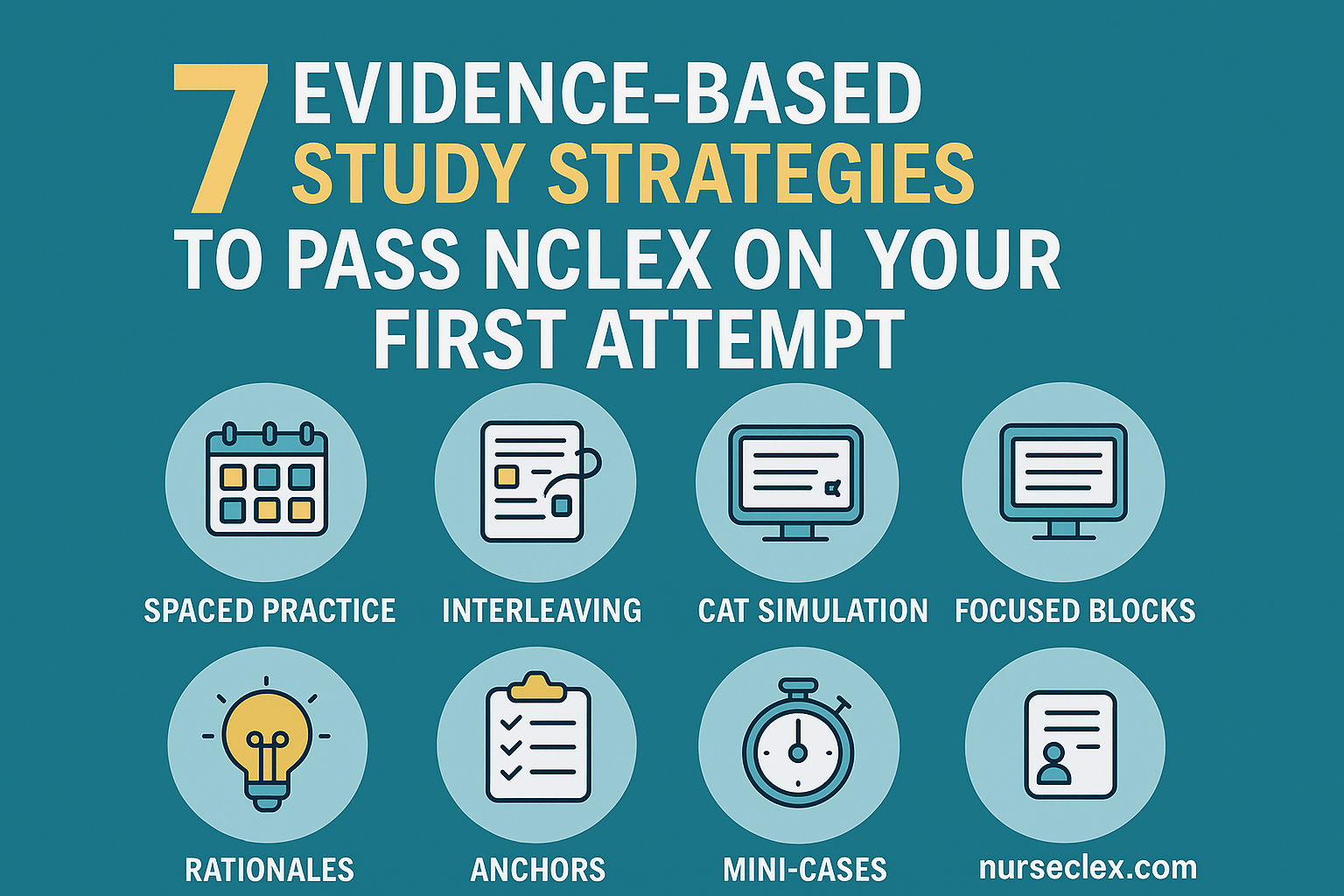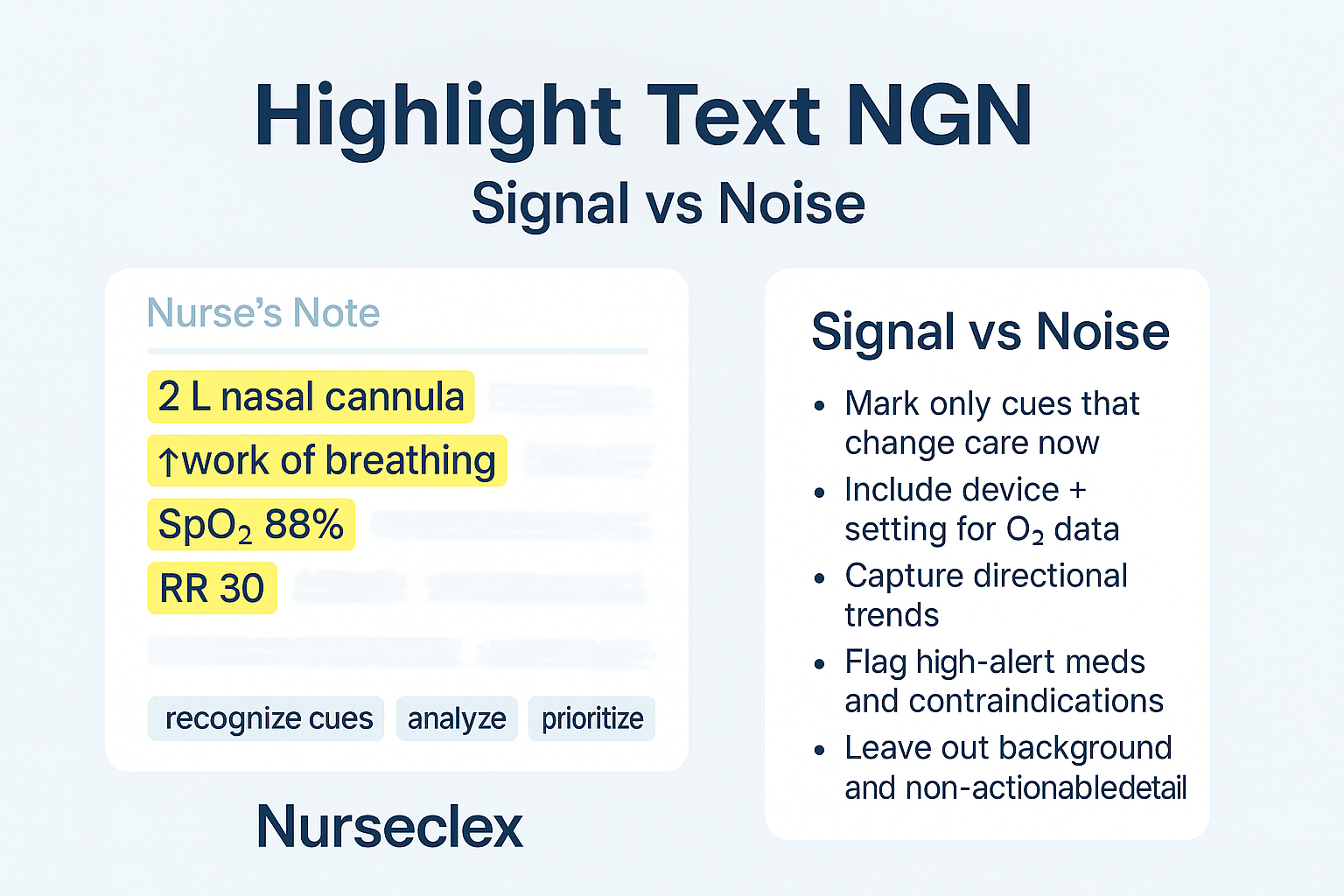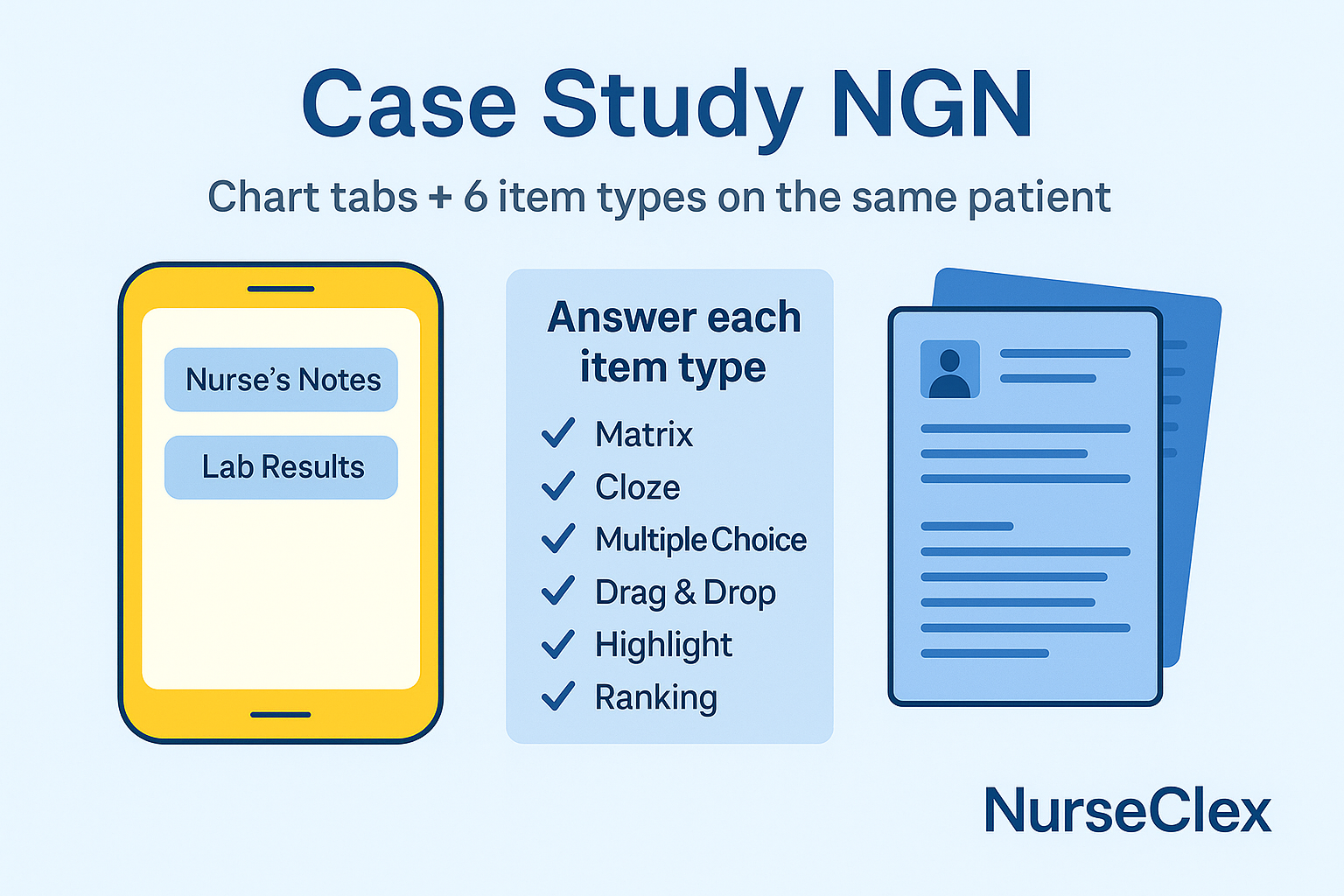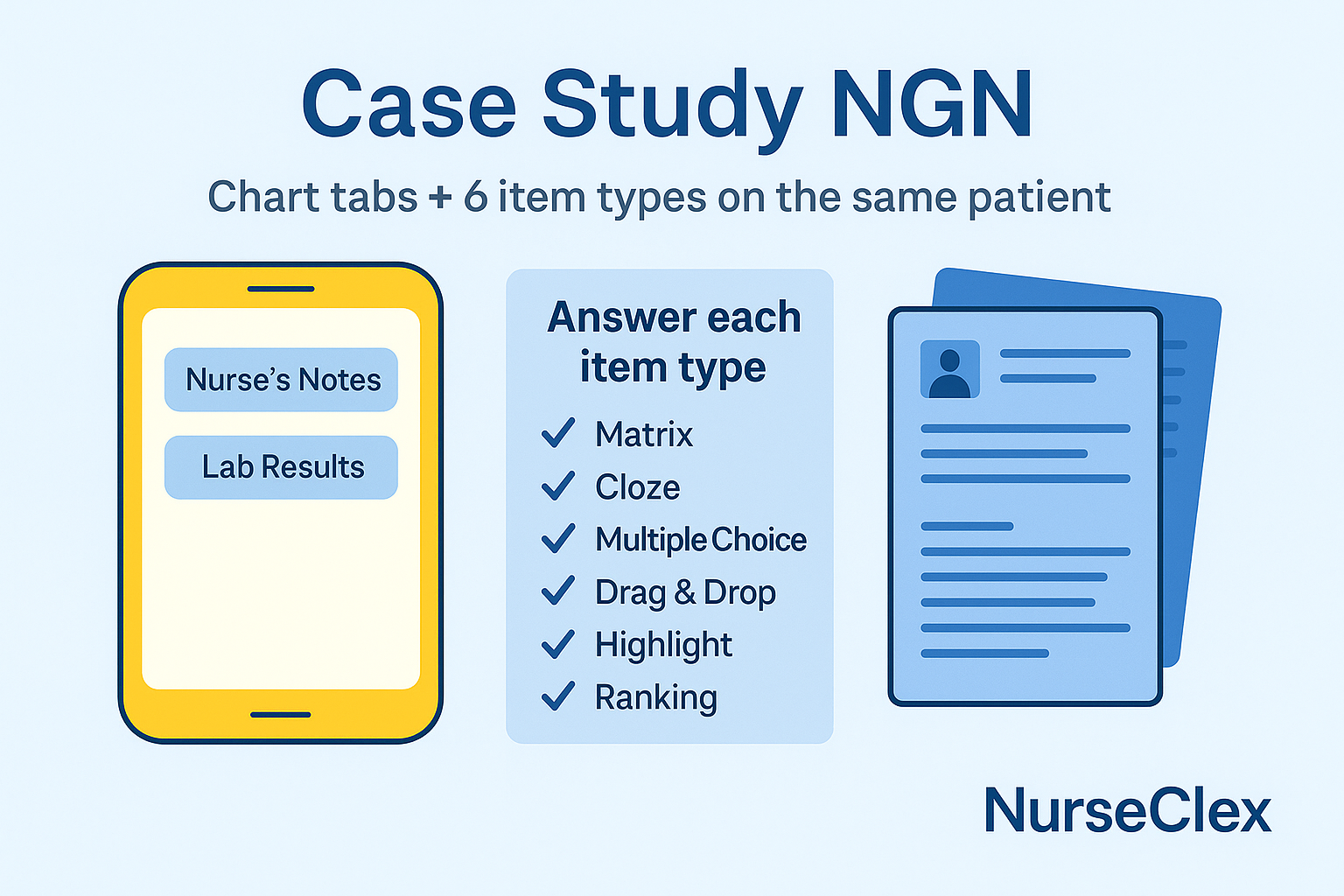Drop-down rationale NGN items ask you to justify a finding, device, medication, or action by picking the best reason—often with partial credit across multiple blanks.
New to NGN flow? Warm up with Cue Recognition, Analysis & Prioritization, and NGN Partial Credit. For official exam design, see NCSBN: https://www.ncsbn.org/exams.page
How drop-down rationale NGN works (fast overview)
These items test cause–effect thinking.
You match an action (or cue) to the most specific rationale that protects safety or proves effectiveness. Vague, off-timing, or comfort-only reasons usually lose points.
The “Why Map” (3 easy steps)
-
Name the current problem. Oxygenation, perfusion, neuro, infection, or metabolic—what matters now?
-
Confirm the action. Does it address the current priority safely?
-
Pick the tightest rationale. Prefer reasons tied to safety, protocol targets, or toxicity monitoring.
Why it works: Drop-down rationale NGN rewards specific, step-appropriate reasons and penalizes vague or mistimed teaching.
Rationale patterns that score
| Situation | Good action | Best rationale (choose this) |
|---|---|---|
| Hypoxemia on 2 L NC, ↑ WOB | Escalate to Venturi | Delivers precise FiO₂; helps prevent CO₂ retention |
| New IV heparin | Check aPTT per protocol | Guides therapeutic anticoagulation and bleeding risk |
| Suspected C. diff | Contact precautions; soap & water | Alcohol doesn’t kill spores; soap removes them |
| Severe preeclampsia on MgSO₄ | Monitor RR, DTRs, UO | Detects Mg toxicity and protects airway |
| Hyperkalemia + ECG changes | Give calcium gluconate | Stabilizes myocardium while K⁺ is shifted |
When two answers look right, pick the more specific safety/effect rationale for this moment.
Worked examples
1) Oxygenation
Stem: COPD; SpO₂ 88% on 2 L NC, RR 30, accessory muscles.
Action: Switch to Venturi mask 35%.
Best rationale: Precise FiO₂ reduces hypoxemia without overshoot and helps avoid CO₂ retention.
2) Anticoagulation
Stem: New heparin infusion for DVT.
Action: Check aPTT q6h until therapeutic.
Best rationale: aPTT guides therapeutic range and prevents bleeding.
3) Preeclampsia
Stem: Severe preeclampsia; MgSO₄ started.
Action: Seizure precautions; monitor RR/DTRs/UO.
Best rationale: Detects Mg toxicity and protects airway.
Language cues that usually win
-
“Stabilizes / protects / maintains …” → safety first
-
“To reach protocol target (FiO₂ %, aPTT range)” → effectiveness
-
“Detect toxicity / complication of X” → risk monitoring
-
Device + setting beats a comfort-only reason
Mini-drills (5-second picks)
-
ABG rising CO₂ on simple mask → Venturi because precise FiO₂ controls O₂ while watching CO₂.
-
Insulin infusion for DKA → monitor K⁺/glucose because insulin shifts K⁺; prevents hypo-K and hypoglycemia.
-
Suspected GI bleed → two large-bore IVs, type & cross because it enables rapid blood/volume for perfusion.
Common pitfalls (and quick fixes)
-
Teaching over safety. Stabilize first; teach later.
-
Background reason, not now-reason. Match the current priority.
-
Vague phrasing. Choose the specific cause–effect statement.
-
Scope mismatch. Don’t imply UAP can do RN-only tasks.
Quick checklist (print this)
-
Current problem named (O₂ / perfusion / neuro / infection / metabolic)
-
Action addresses now-priority
-
Rationale is specific to safety/effect
-
No scope conflicts
-
Reassessment or protocol target implied when relevant
Practice next (internal & external links)
-
Read trends like a pro → Trend Items
-
Protect row-level points → Matrix Multiple Response
-
Tighten phrasing → Cloze Items
-
Set the safest first action → Analysis & Prioritization
-
Bank points with partial credit → NGN Partial Credit
-
Official NGN background → NCSBN: https://www.ncsbn.org/
FAQs
Do all drop-down rationale questions use partial credit?
Many multi-blank items do. Choose the safest, most specific rationale either way.
If two rationales look correct, which wins?
Pick the one tied to life-threat safety (airway, perfusion, neuro) or toxicity prevention.
Should I prefer protocol-based wording?
Yes. Referencing targets (aPTT range, FiO₂ %) usually scores better than generic statements.







